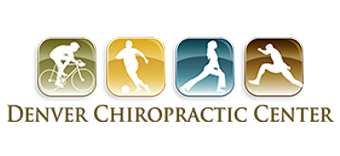This past week at Boulder Peak, and the latest edition of Denver Chiropractic Center’s 1-Page Health News
This past week the staff from Denver Chiropractic Centers all over the state. Dr. Hyman was up in Beaver Creek training for Xterra Beaver Creek on July 14. While biking, he ran into a bear under lift 11. There’s a little snippet of video posted on our blog: http://www.denverback.com/?p=861
Dr. Stripling and Keri were up working hard leading the Active Release treatment team at the Boulder Peak Triathlon this weekend. Here’s a picture from the brief window when Dr. Hyman stopped by:
And here’s the 1-Page Health News for You…
Mental Attitude: Immune Against Alzheimer’s? Researchers discovered the best marker associated with memory is a gene called CCR2. This gene showed immune system activity against beta-amyloid, thought to be the main substance that causes Alzheimer’s disease. According to Dr. Lorna Harries, “Identification of a key player in the interface between immune function and cognitive ability may help us to gain a better understanding of the disease processes involved in Alzheimer’s disease and related disorders.” National Institute on Aging, June 2012
Health Alert: Cancer Rates Expected To Increase! Cancer incidence is expected to increase more than 75% by the year 2030 in developed countries, and over 90% in developing nations. Countries must take action to combat the projected increases in cancer rates via primary prevention strategies such as healthier lifestyles, early detection, and effective treatment programs. Lancet Oncology, June 2012
Diet: Snacking On Raisins. Eating raisins as an after-school snack prevents excessive calorie intake and increases the feeling of fullness as compared to other commonly consumed snacks. Grapes, potato chips and cookies resulted in approximately 56%, 70% and 108% higher calorie intake compared to raisins, respectively. The cumulative calorie intake (breakfast + morning snack + lunch + after-school snack) was 10-19% lower in children who ate raisins as an after school snack when compared to children who consumed other snacks. Canadian Nutrition Society, May 2012
Exercise: Exercise and Cancer. Researchers are working toward proving that daily yoga or 20 minutes of walking will likely extend a cancer patient’s survival. In 15 years, doctors have gone from being afraid to recommend exercise to cancer patients to having enough data that shows it is safe and effective, particularly for relief of treatment side effects. American Society of Clinical Oncology Annual Meeting, June 2012
Active Release: A whole lot of nerve? Your nervous system runs and controls every aspect of your body. For example, there are 45 miles of nerves in your skin alone. Nerves throughout your body can become trapped in muscles, causing symptoms from headaches to carpal tunnel to sciatica to tingling in the toes. Active Release can take pressure off of nerves and fix problems. Gray’s Anatomy / Active Release Techniques
Wellness/Prevention: Early Stress? Children who experience intense and lasting stressful events in their lives score lower on tests of the spatial working memory and have more trouble on tests of short-term memory. Journal of Neuroscience, June 2012
Quote: “Remember to perform random acts of kindness.” ~ From the film Pay It Forward, released in 2000


